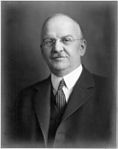1926 Ontario general election
| |||||||||||||||||||||||||||||||||||||||||||||||||||||||||||||||||||||||
112 seats in the 17th Legislative Assembly of Ontario 57 seats were needed for a majority | |||||||||||||||||||||||||||||||||||||||||||||||||||||||||||||||||||||||
|---|---|---|---|---|---|---|---|---|---|---|---|---|---|---|---|---|---|---|---|---|---|---|---|---|---|---|---|---|---|---|---|---|---|---|---|---|---|---|---|---|---|---|---|---|---|---|---|---|---|---|---|---|---|---|---|---|---|---|---|---|---|---|---|---|---|---|---|---|---|---|---|
| |||||||||||||||||||||||||||||||||||||||||||||||||||||||||||||||||||||||
| |||||||||||||||||||||||||||||||||||||||||||||||||||||||||||||||||||||||
The Ontario general election, 1926 was the 17th general election held in the Province of Ontario, Canada. It was held on December 1, 1926, to elect the 112 Members of the 17th Legislative Assembly of Ontario ("MLAs").
The Ontario Conservative Party, led by George Howard Ferguson, was re-elected for a second term in government, despite losing a few seats in the Legislative Assembly. The principal issue of the campaign was the government's proposal to repeal the Ontario Temperance Act and replace prohibition with government control of liquor sales. The Opposition Liberal and Progressive parties both campaigned against repeal and one of Ferguson's ministers, William Folger Nickle, resigned from the cabinet and ran for re-election against the government as a Prohibitionist candidate.
The Ontario Liberal Party, led by W.E.N. Sinclair, maintained its 14 seats. After the defeat of the United Farmers of Ontario in the previous election, the farmers organization decided to withdraw from electoral politics and most UFO MPPs redesignated themselves as Progressives with former UFO Attorney-General William Edgar Raney becoming party leader. Nevertheless, several MPPs, including Raney himself, continued to run as candidates endorsed by local UFO associations despite the decision of the organization as a whole not to run in elections. The Progressive/UFO faction won 13 seats. As well, four Liberal-Progressive candidates were elected, along with various independents. Karl Homuth of Waterloo South was the only Labour MLA returned; a former UFO-Labour MLA, he would run as a Conservative in the 1929 election.
Results
| Party | Leader | 1923 | Elected | % change | Popular vote | ||||||||||||||||||||||||||||||
|---|---|---|---|---|---|---|---|---|---|---|---|---|---|---|---|---|---|---|---|---|---|---|---|---|---|---|---|---|---|---|---|---|---|---|---|
| % | change
Template:Canadian politics/party colours/Progressive Conservatives/row |
Conservative | George Howard Ferguson | 75 | 72 | -4.0% | 57.6% | +7.8% | Liberal | W.E.N. Sinclair | 14 | 14 | - | 24.6% | +2.8% | Liberal-Prohibitionist | * | 1 | * | * | |||||||||||||||
| Progressive | William Raney | 17 | 10 | -23.5% | 7.2% | -12.4% | |||||||||||||||||||||||||||||
| United Farmers[1] | Leslie Oke | 3 | 1.3% | Labour[2] | 4 | 1[3] | -75.0% | 1.3% | -3.4% | ||||||||||||||||||||||||||
| Liberal–Progressive | * | 4 | * | * | Liberal Independent | * | 4 | * | * | Conservative Independent | * | 2 | * | * | Progressive Independent | * | 1 | * | * | Independent | 1 | - | |||||||||||||
| Total Seats | 111 | 112 | +0.9% | 100% | |||||||||||||||||||||||||||||||
Notes:
* Party did not nominate candidates in previous election.
- ^ Leslie Oke and Beniah Bowman broke with the Progressives as they were opposed to William Raney's leadership as he was not a farmer and were also opposed to the creation of a new Progressive Party which would not exclusively be a farmers party. Bowman resigned from the legislature before the election but was succeeded in his Manitoulin riding by Thomas Farquhar. The UFO picked up a third seat, Grey South, where Farquhar Oliver won with the assistance of federal MP Agnes MacPhail. The three UFO members did not join the Progressive caucus after the election.
- ^ The Labour candidates were not a unified bloc in this election. Labour MLAs caucused with the Progressives in the previous legislature and were often referred to as Progressive-Labour MLAs. They were not united behind Progressive leader Raney over the main issue of the campaign, prohibition, with Karl Homuth, the sole Labour MLA who was re-elected in 1926, supporting the Conservative government's policy in favour of allowing the sale of liquor. Another Labour candidate, H.A. Stevenson in London South ran as a Labor-Prohibitionist while a fourth, A.E. Smith in Hamilton Centre was the candidate of the Canadian Labour Party and a member of the Communist Party of Canada.
- ^ Karl Homuth is the sole Labour MLA elected. He ran for re-election on a platform supporting Premier Ferguson's policy on repealing the Ontario Temperance Act and supported the government in the legislature. Joins the Conservatives in the next election.


